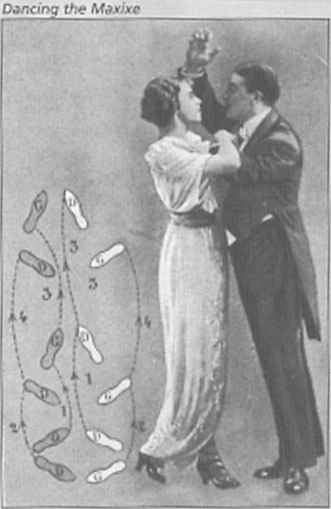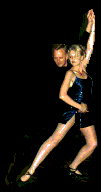|
|
|
Notes on Samba...
Origins of Samba - 1916 to 1928... by Paul F. Clifford Many years ago in a room of the Brazilian Society of Authors, Composers and Writers of Music, Ismael Silva one of the founders of Rioís first Samba schools (1928) and Donga the musician accredited as having the first record registered as a Samba (1916) argued on what was a true samba... |
|
Donga: Ué, ué. Samba é isso há muito tempo
O chefe da polícia pelo telefone mandou me avisar que na Carioca tem uma roleta para se jogar. Ismael: "Pelo Telefone!" Isso é maxixe! Donga: Então o que é samba? Ismael: É este! Se você jurar que me tem amor eu posso me regenerar mas se é pra fingir, mulher a orgia assim não vou deixar." Donga: Isso não é samba, é marcha! |
Donga: Ué, ué. Samba is this. Has much time
The head of the police On the telephone Had to inform me That in Carioca There is a roulette wheel, should you like to play Ismael: "On the Telephone!" This is maxixe! Donga: So what is samba then? Ismael: It is this! If you'll swear That you love me I can become a good man again But if you want to fake it, woman I won't leave the orgy Donga: "Se Voce Jurar" is not samba! It is a marcha! |
|
In an interview, Ismael Silva said about the history of the samba that: "They say that the first samba is "Pelo Telefone" - it is not; this is Maxixe. In the Morro [hills surrounding Rio], samba is batucada. The same samba is born of a rhythmic necessity that it allows you to sing, to dance and to parade at the same time. The samba has an interesting and long history - it comes from Bahia. Our ascendants are blacks who had suffered the slavery...From there the samba was born of social and rhythmic necessity. Donga says the samba I co-authored with Nilton Bastos for the 1931 Carnival, "Se Voce Jurar", is a Marcha. It is not! Samba is not Maxixe. It is Batucada!" What is a Samba? In regards to the music, this discussion has been going on for 70 years! In 1956 Pierre Lavelle formalised the Ballroom dance steps of the Samba and in the context of the dance, formalised the music, at least the music used in competitive dance. However, ballroom is only one variety of samba dance. The popular variations, call them StreetDances if you will, have developed as the music has gone through various transitions. As a description of a popular musical form, the term "Samba" was first commercialised in 1916; written by Donga and recorded by the band Oita Batutas. However, the Samba rhythm has older origins linked to the rituals of the Afro-Brazilian Candomble religion and to the lives of the black refugees who at the beginning of the twentieth century fled from Bahai in the north east of Brazil to Rio. A typical dance history of Samba will always mention the dancers Manuel Diniz ("Duque" - the duke) and Gaby, two Maxixe dancers resident in Paris, who are credited with creating the ballroom version of Samba (the dance) and introducing it to Europe. However, this history of samba conveniently omits to mention the band called Oito Batutas and the black musicians Pixinguinha and Donga. These were the musicians that introduced Duque to the Samba rhythm. These are the musicians, that accompanied Duque to Paris and who introduced Paris to the syncretised "black" music of Brazil! |

|
Prado Perez, whose music popularised the mambo in the 1950s, once said that to popularise the music you need to invent a dance but the dance must change as the music changes! Duque is accredited with modifying the Maxixe to fit the innovative music that Oito Batutas played. However, without this new music, Duque was just a talented Maxixe dancer. The band however, continued to develop their music and with it inspired a new dance style called Samba-Carioca (Samba of Rio de Janeiro) that since the 1930s has become popular in the USA and the UK. Before the "talking" movies, pianists and sometimes small orchestras were contracted by the movie houses to accompany action on the screen. The Oito Batutas started this way. Often prestigious white musicians would perform on stage. However, because Oito Batutas consisted of black musicians, they were not allowed to play on stage. They played in the foyer of the theatre. Still, their music, was particularly popular! In fact, some people bought tickets just to listen to the band and paid no attention to the films shown. Although, Oita Batutas was essentially a Choro ensemble, they were the first band to employ (in addition to the traditional flute, violão, and cavaquinho) instruments like the reco-reco, the pandeiro, and the ganzá. The inclusion of these instruments gave the band a unique sound. In 1920 the bandís members were Alfredo da Rocha Viana Filho (Pixinguinha) on flute, Ernesto dos Santos (Donga) and Raul Palmieri on violão, Otávio Viana (China) on violão and vocals, Nélson dos Santos Alves on cavaquinho, Luís Pinto da Silva on bandola and reco-reco, Jacob Palmieri on pandeiro and José Alves Lima on bandolim and ganzá. Their repertoire included maxixes, lundus, modinhas, batuques, and cateretês In September 1920, the band was invited to work at the Assrio cabaret, to accompany the performances of visting dancers, Duque and Gabi. The dance couple who a few years earlier had made Maxixe famous in Europe. Duque was so impressed by the band that he wanted them to accompany him on a tour of Europe. At Duque's prompting, millionaire Eduardo Guinle (already a fan of the band), agreed to sponsor them so that they could travel to Paris. As soon as news of the European tour broke, newspapers in Rio and even in the Northeast of Brazil ran articles by writers who were outraged by the idea of "arrogant and ridiculous blacks" representing Brazil. Among those who complained were Gilberto Amado, a writer and politician in the Brazilian House of Representatives. It might be helpful at this point to understand that when Samba was on its way to Paris, Brazil had only been free of slavery for 34 years. |

|
Cartola (Angenor de Oliveira - 1908-1980) who in 1928 co-founded the Samba school, "Bloco dos Arangueiros" in Mangueria, was quoted as saying "In my childhood we played the Samba in the backyards of the old ladies, whom we called tias (aunts), and the police stopped us often, because the Samba then, was considered a thing of bums and bandits." In Brazil prejudice against the blacks and their music was open and extreme. So it isnít hard to imagine that when it was announced in 1921 that black musicians had been chosen to go to Paris, Brazilian newspapers were outraged by the idea of having such a "barbarian and primitive music" represent the country. However, the French loved this novel music, with Pixinguinha and his band receiving rave reviews. Their impact was so great, that the intended one month tour lasted six months! The band, Oita Batutas, arrived in Paris in the winter of 1922 to play in the Scheherazade cabaret, where Duque had already danced successfully. Pixinguinha was concerned that his flute wouldnít be heard properly in the ample Parisian auditoriums and so he adopted the Selmer soprano sax, this instrument typical of jazz, brought a radical transformation in the traditional instrumentation of a choro band and prepared the way for the transition of Samba from a Brazilian novelty into a worldwide phenomena. The newspapers reported that the hallucinating rhythm of the Brazilians had invaded Paris. The bands performances were a total success among both audiences and critics. Pixinguinha was paid homage by many a famous musician, including Harold de Bozzi, first-award winner flutiest from the Paris Conservatorium of Music. In 1923 when Donga, Pixinguinha and the other members of Oita Batutas returned from their Paris tour they went back to their old gig at the Assrio. However, on their return they brought back a different instrumentation for the band - trumpet, trombone, saxophone and banjo. It was Oita Batutas who introduced jazz instrumentation into Brazil. These instruments combined with the varied Brazilian percussion instruments they already employed, gave the Samba a whole new sound. Donga adopted the banjo, leaving the guitar; Pixinguinha adopted the saxophone (although he kept the flute as his main instrument for 20 years). With this new sound, composers including Donga, Pixinguinha, Sinhô (José Barbosa da Silva), and Heitor dos Prazeres established the genre called samba-carioca (samba of Rio de Janeiro) and samba da cidade (samba of the city). This samba, with a characteristic syncopated rhythm came to dominate much of Rioís carnaval music. By 1928 there must have been some disagreement amongst the members of Oita Batutas because Pixinguinha dissolved the band and with Donga formed the Orquestra Tpica Pixinguinha-Donga and recorded several records with the Parlophon label. Also in 1928 Pixinguinha recorded "Carinhoso". The critics panned it because they thought the harmony was too "Americanized". To continue click here! . . . Part2 - Candomble and the Music Other articles in the Origins of Samba series
|
|
Press Ctrl-D to Bookmark this page!
Something new will appear at StreetDance most months. Stay up-to-date! Sign up for our free newsletter! Email us! If you enjoyed StreetDance's articles. Tell your friends about this site! Email them! If you found something lacking, tell us and it will be fixed! Tell us what you would like to read about! So talk to us! Feedback. StreetDance@mail.com |
Got a question? Click here! Want to know something more about Latin StreetDance click on one of the followng Dance History Mambo, Cha Cha & Salsa | Merengue | Samba Latin Dance Technique Feeling | Technique | Tricks & Tips | The Yambus | The Clave Basic Timing and Steps Mambo | Cha Cha | Salsa | Merengue | Samba Basic Choreography Mambo, Cha Cha & Salsa | Merengue | Samba Other Stuff Articles | Gig Guides | Dance Videos | Classifieds | Links | Home |
This page was last updated November 2000
copyright Paul F Clifford (2000)
